cryptoacademy season 3 week 1| [assignment post for professor @sapwood]
Hello everyone. This is the second advanced level course of season 3 in which professor @sapwood explained us about the Non-Custodial P2P Marketplace (localcryptos)
In this assignment post you'll learn all abou the local cryptos, the process of setting it up, localcryptos wallets and much more
Here we go;
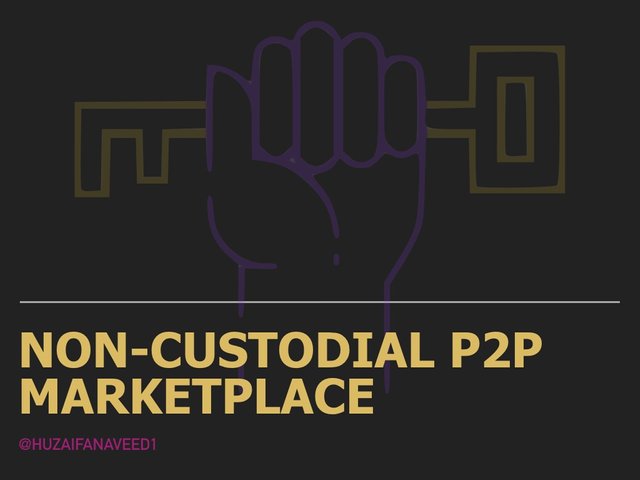
(1) How do you set up an Exchange niche(non-custodial) in Localcryptos? (Complete process & Screenshots needed)
This is a marketplace where you can trade amongst each other without the interference of an external 3rd party. There are 40+ fiat options and 4 Cryptocurrencies, which are, BTC, LTC, ETH and DASH are available for trading.
This is a complete decentralised P2P trading platform which offers an on- chain escrow service(will discuss in upcoming questions) and security.
How to setup an exchange Niche (localcryptos) in local cryptos
The Non-Custodial wallets offers us two opportunities which are:
crypto-crypto transaction
crypto-fiat transactions
Process of setting up
- The foremost step is to visit the website localcryptos.com
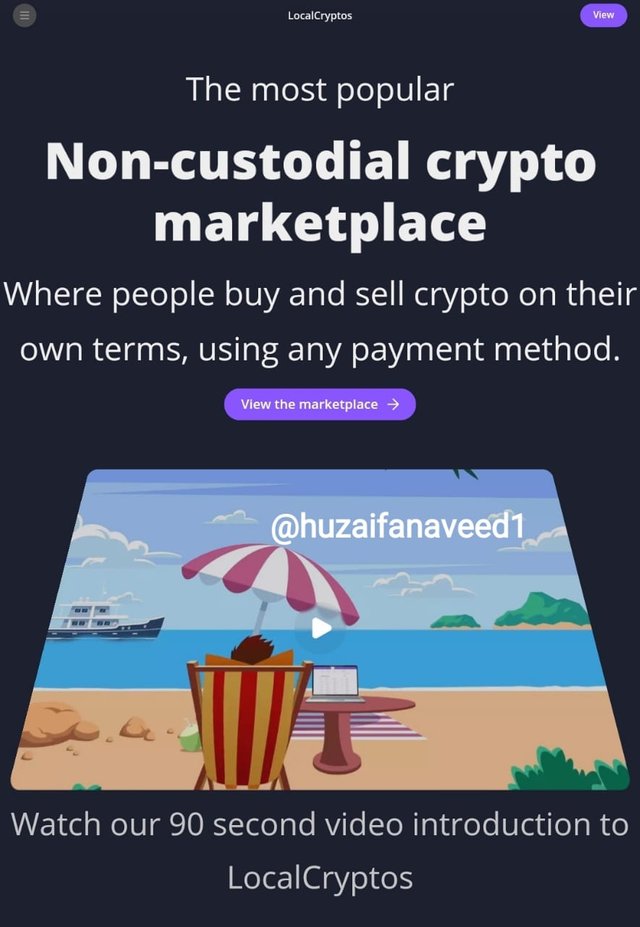
- chose your desirable account type. The recommended one is to sign up through your email
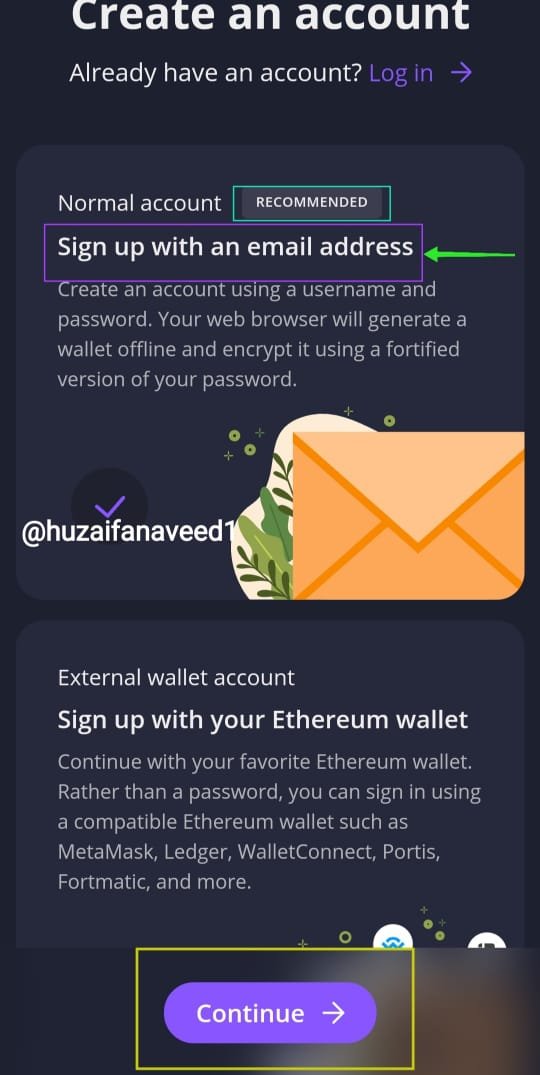
- Write down your required personal information, such as, username, email and password
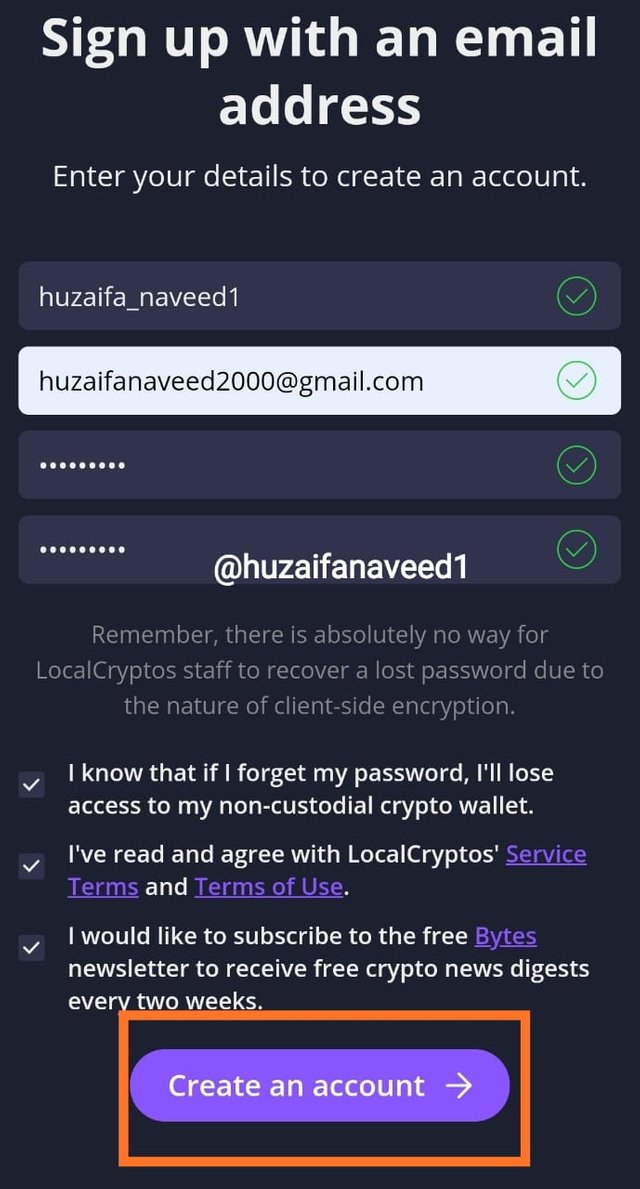
Fill in the captcha correctly and an email will be sent to your id through which you'll have to verify the account
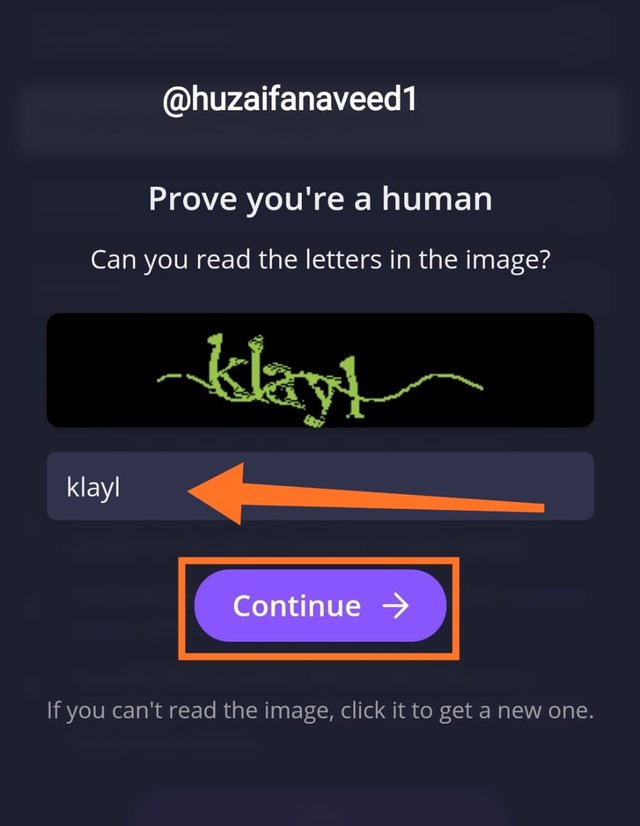
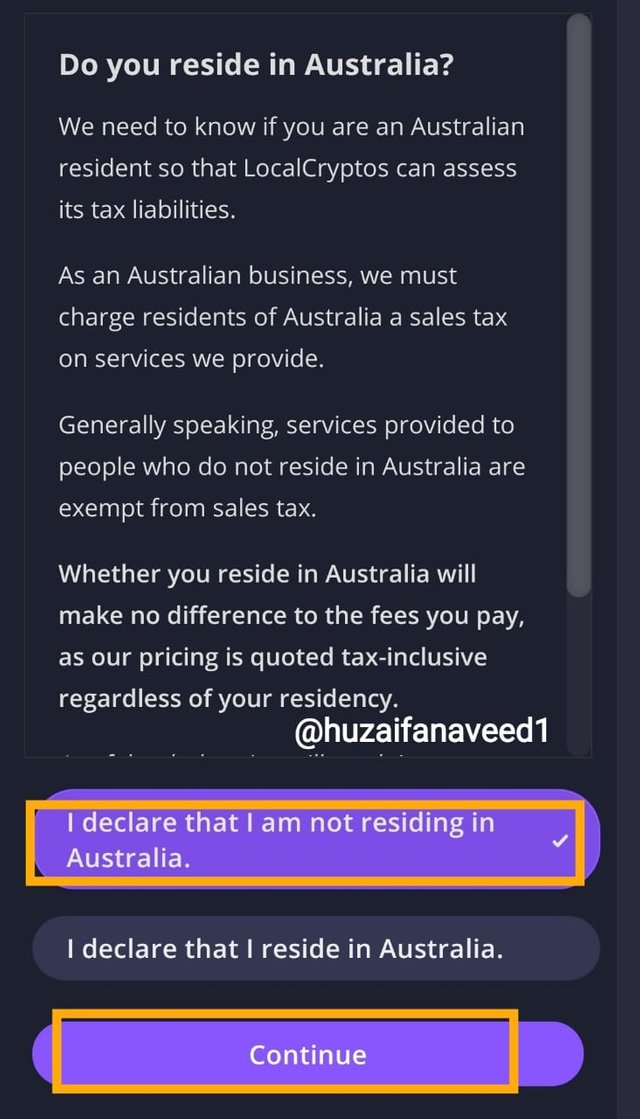
- You'll be directed to the marketplace.
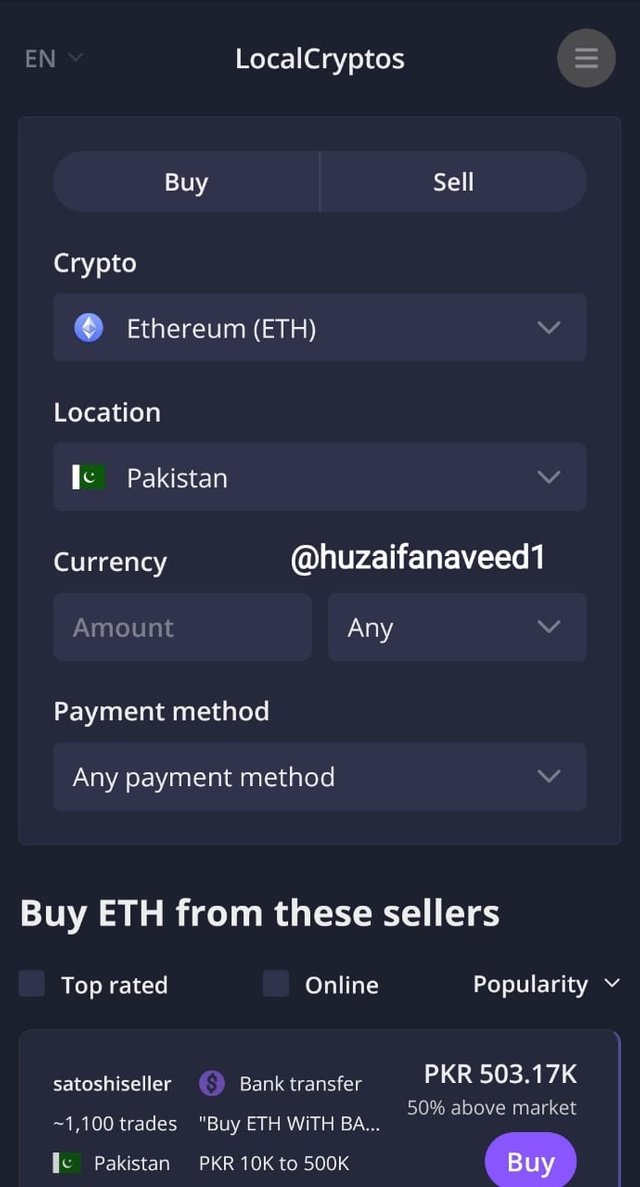

(2) Indicate your non-custodial wallets (BTC, ETH. LTC, DASH) in Localcryptos? How do you secure the keys? Can you re-import the wallet of Localcryptos in other wallets(of different services) For example, Can you re-import your Locaclcryptos wallet in Trustwallet?
The wallets available on the this platform are
- BTC
- ETH
- LTC
- DASH
Every particular wallet has its particular address. To access the wallets, follow the procedure below.
- click on the 3 lines option, as shown below
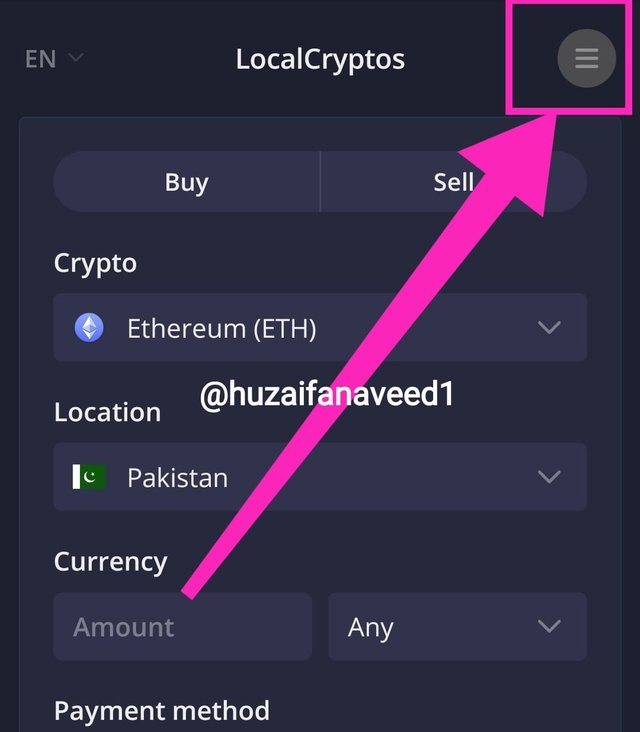
- click on wallets
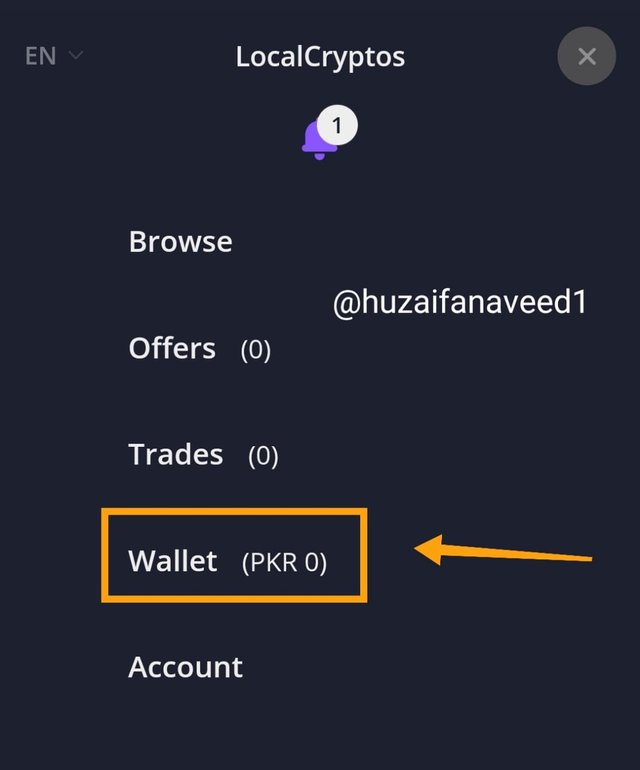
- you can see the four available wallets
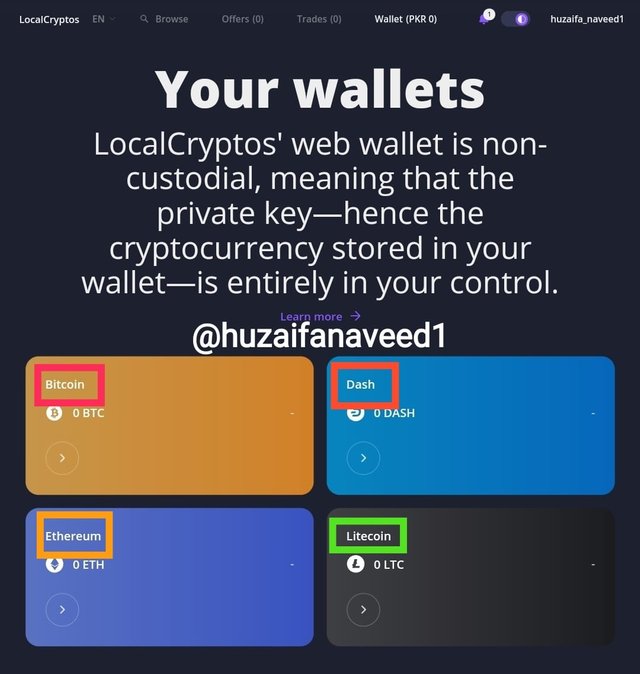
I'll be exploring the LTC wallet.
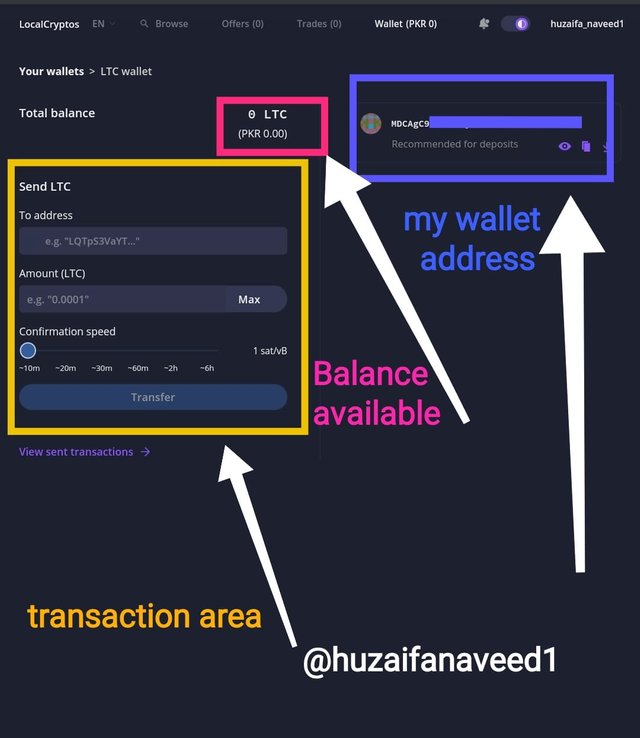
- in this screenshot you can see the area of transaction. In center it's the total amount of LTC that you have. And on the right is your wallet address
Exporting my wallet's private (access) key in localcryptos
- When you'll click on your desired wallet, in my case I have chosen the LTC wallet, on the right side you'll see the option of download beneath the wallet address.
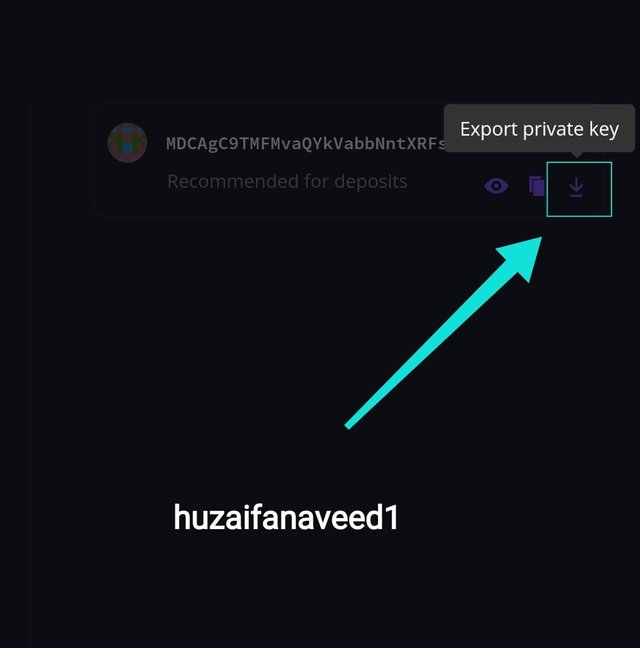
- clicking on this option will show you your export key.
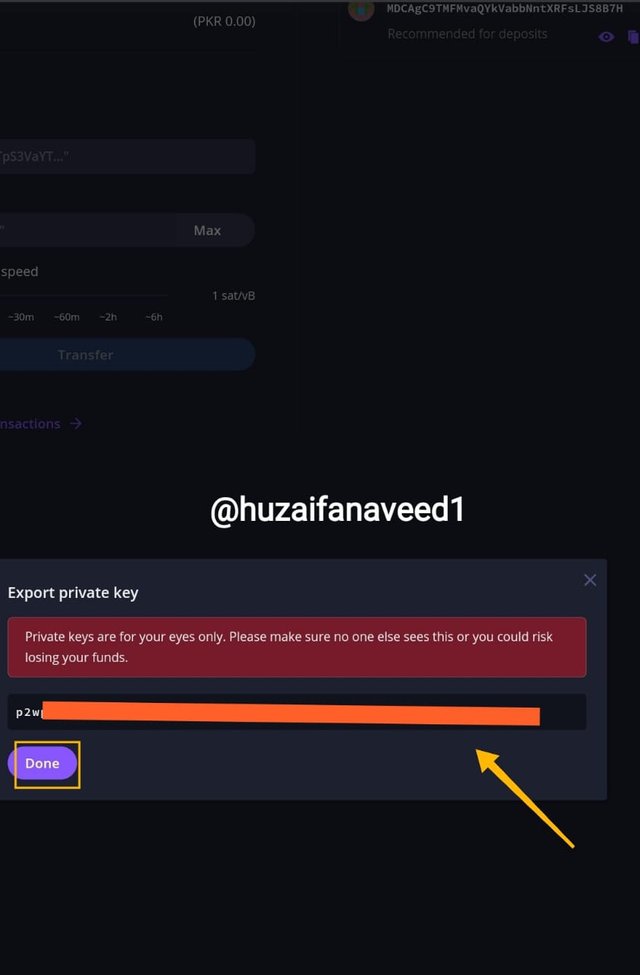
- For exporting you key, tap on the wallet option and choose the back up your wallet option.
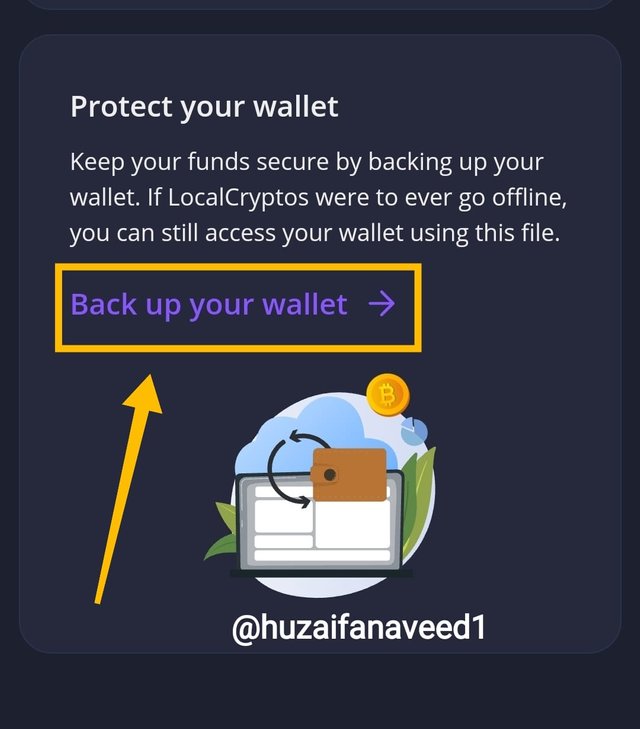
- next, click on the download wallet
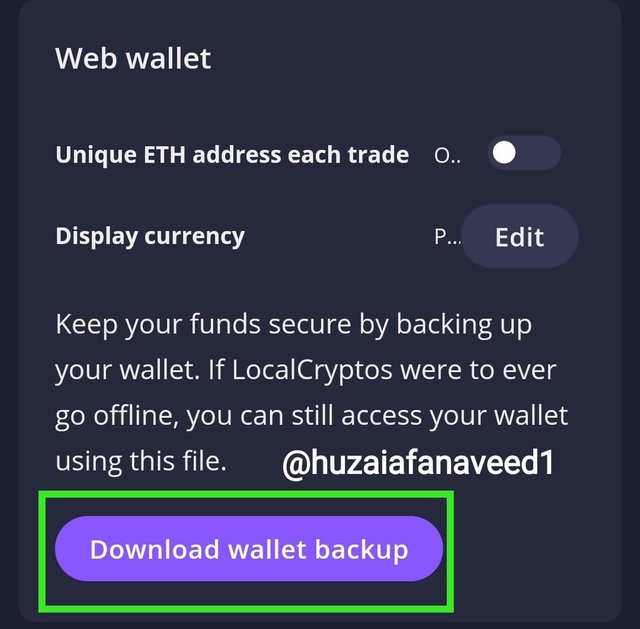
- doing this will download a file. My advice would be to store your password offline as well.
Re- importing a Non-Custodial wallet
One of the best things about a Non-Custodial wallet is the decentralisation which means you have full control over your wallet and you can re-import it to a different platform.
This is carried out by using the private keys
The localcrypto ETH can be imported into other crypto wallets. But make sure you keep your private key safe.

(3) How many different fiat options available in Localcryptos?
As mentioned above, there are 40+ fiat currencies available for crypto-fiat trading. Through this availability, it has made it easier for the users around the world to trade in their desirable currencies.
Example: USD, EURO, PKR, INR etc
There are list of options available by popularity or by price, which you can trade. You can trade with any offer you find yourself comfortable with.
Sap16
For my country, Pakistan, there are 3 options available which are; bank transfer, Cash and cash deposit

Some international methods, which include western union, moneygram etc
There are also some restrictions in payment methods which include Skrill, PAYEER and Revolut


(4) How secure is Localcryptos as a non-custodial P2P Market? How does escrow protection safeguard both buyers and sellers?
The localcrypto wallets are significantly secure as they are decentralised with an On-chain Escrow service
Decentralisation
The decentralised nature of the Localcrypto wallets hand over the full authority to the users without any involvement of any third-party. It is a P2P platform, theough which the security remains intact.
Except for that, the user must also make sure that his/her private keys are completely safe and backed up as well
On-chain Escrow service
The On-chain Escrow service provides security to this Localcrypto platform. Unlike other platforms which have off-chain escrow services the Localcrypto wallets work under the On-chain Escrow service which only allows you to carry out transactions within the same block.
The Escrow service is used to settle any disputes amongts the traders and also facilitate them in having a trade in a safe environment without getting it meddled with any third-party. The escrow service uses smart contracts to ensure this.
Securing both buyers and sellers
The escrow service works using smart contracts, which are basically agreements which take place between traders, ie, buyers and sellers. The conversation between traders is kept absolutely confidential.
In the escrow service, A purchaser should pay solely after the asset is secured in escrow by the seller.
The seller cannot cancel the it, only the buyer has the power of doing so. The seller can only release it after he has received the payment from the buyer.
In case of a dispute, an Arbitrator has to meddle in and mediates and administers the payment to the legitimate party to resolute the issue.

(5) Create an offer as Market Maker or Perform a real trade as Market Taker to demonstrate your real experience of non-custodial P2P trade(Crypto-Fiat)? (Hint- Trading DASH or LTC is cost-effective in terms of transaction and escrow fees)? How much fee in total did you incur in the entire process, if any? (Screenshots Needed)
Market makers are active users who trade regularly on this platform. They are the primary liquidity providers.
Lets see how to create an offer as a Market Maker
How to create an offer
- click on offer. Then click on new offer.
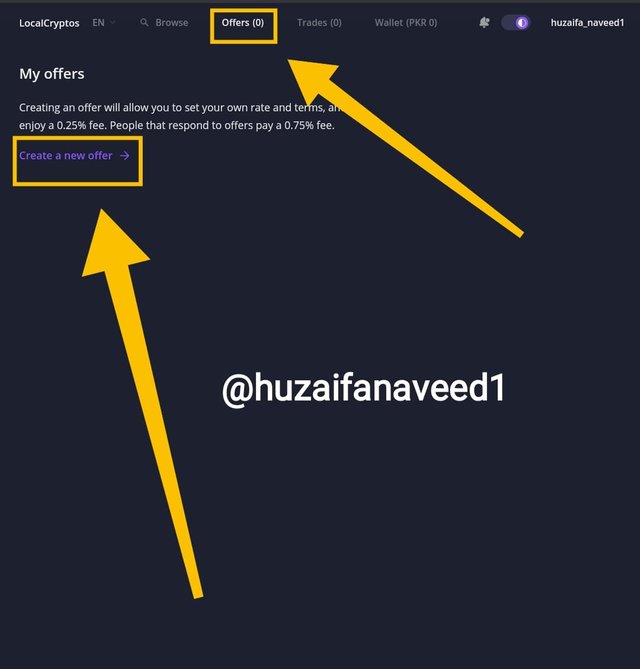
- Then, decide what offer do you want to make. There are different options available as shown below.
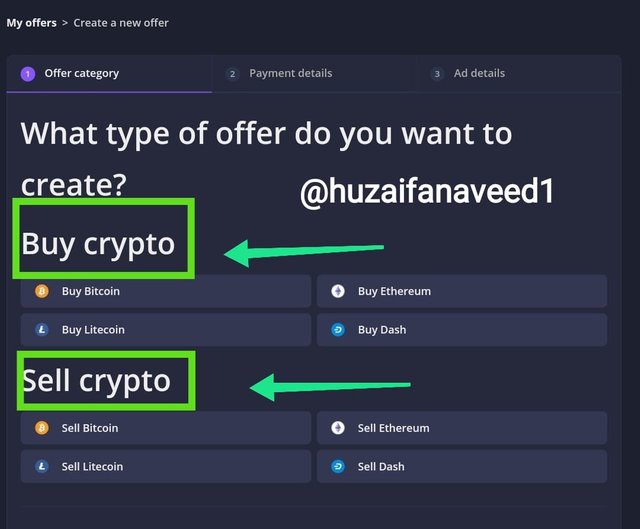
- decide the location that you want to display in the offer and your desirable currency.
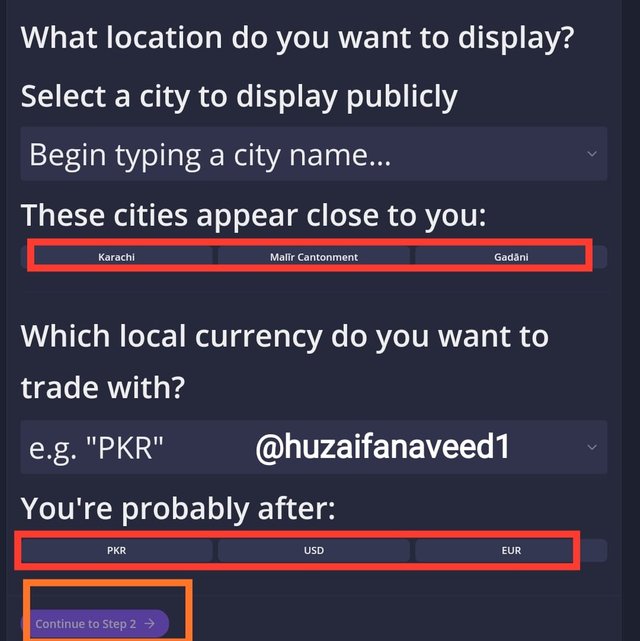
- Choose your payment method.
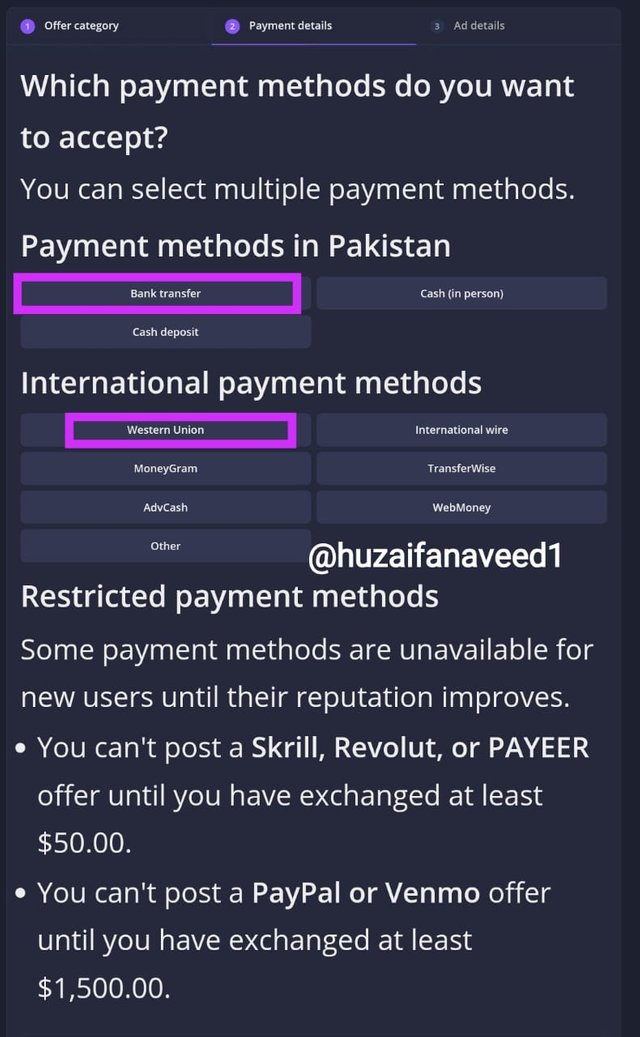
- decide the type of rate you want to use.
- Dynamic Rates
- Custom equation rates
Configure your rate in which you can keep the percentage above or below.
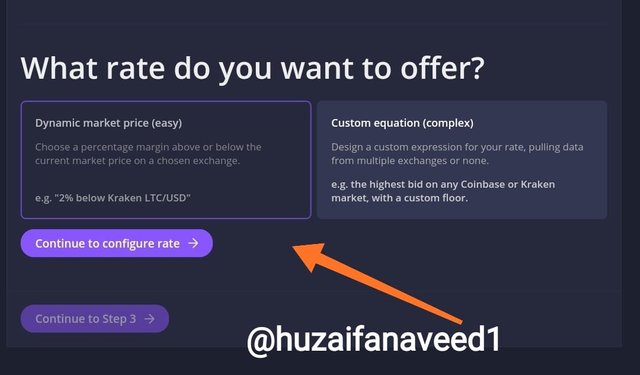
- choose the title and terms of your trade
- set offer limit, put in the time zone and available hours.
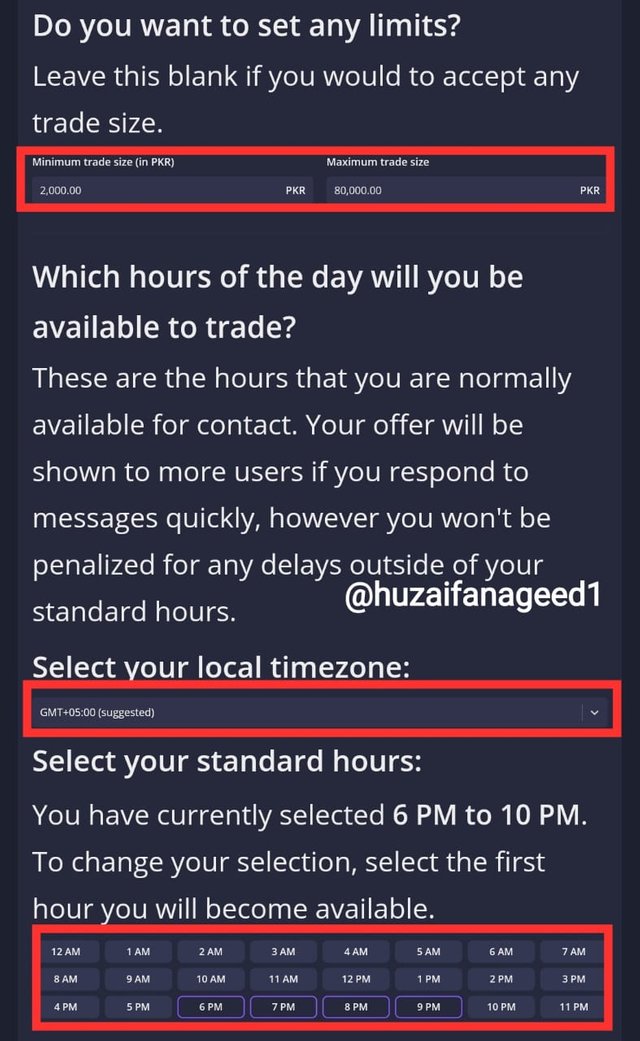
- decide customer restrictions
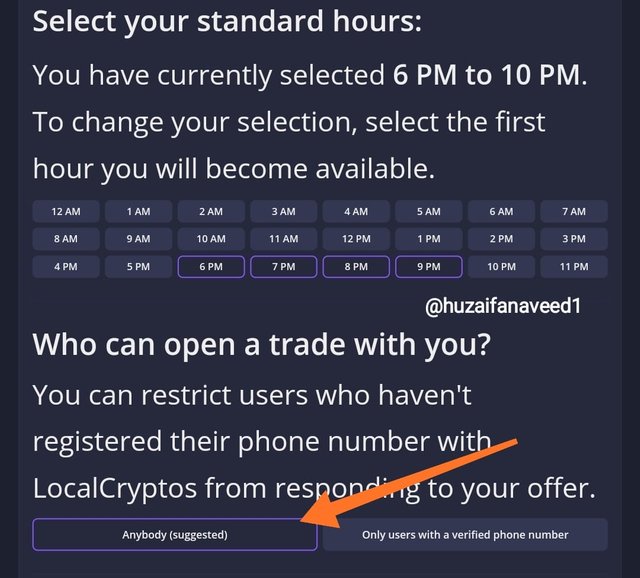
- set the requirement of customer location for better security and post your offer after double checking.
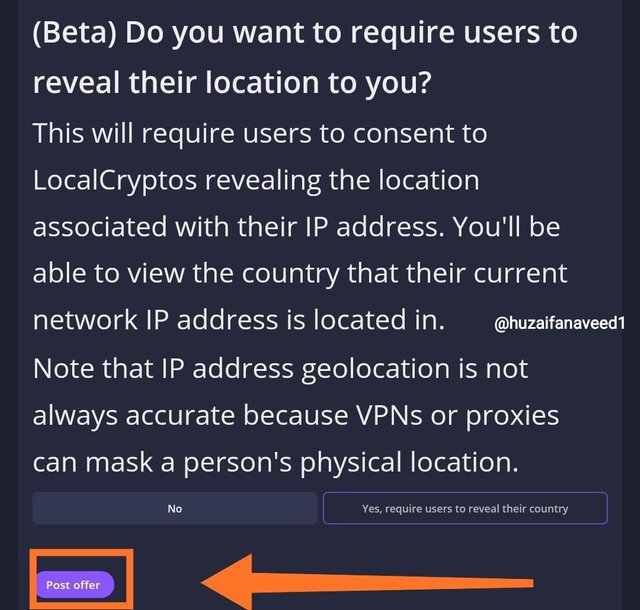
- your offer is live
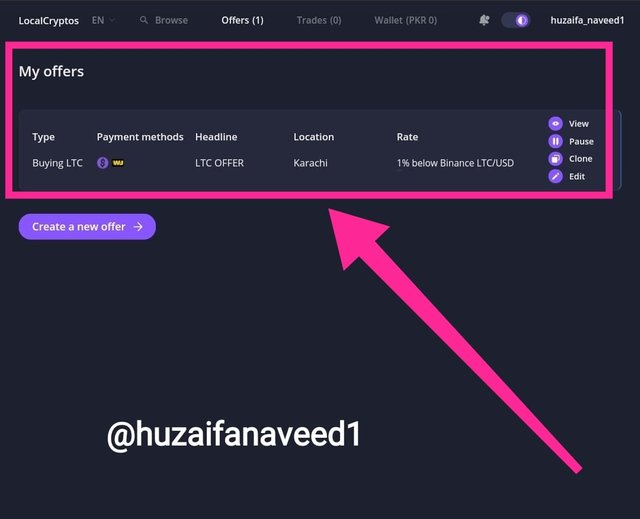

In the end I'd like to say that the Non-Custodial P2P Marketplaces are amazing platforms for trading with complete security and decentralisation. Furthermore the On-chain Escrow service makes sure that the traders are safeguarded. All in all, Non-Custodial marketplace is a great alternative of centralised market places
Lastly, thank you professor @sapwood for this lengthy yet informative lecture. Hope you have a good read.

Regards,
@huzaifanaveed1
